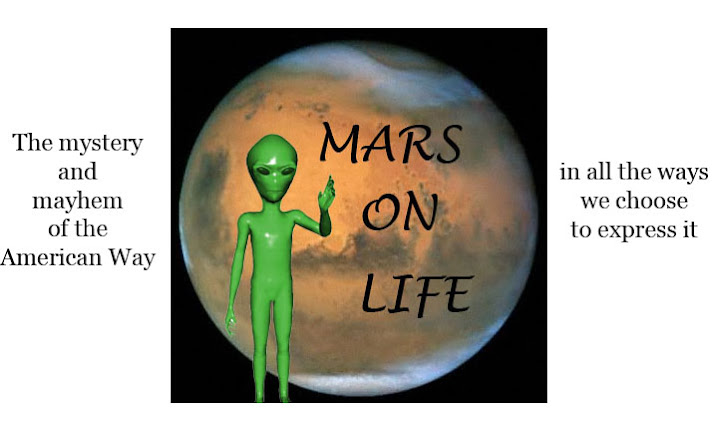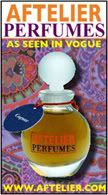They say that if you remember the '60s, you weren't really there. This aphorism doesn't apply to Avsh Alom Gur, the designer behind London Fashion Week's Ossie Clark revival. Gur was born nearly a decade after the end of that tumultuous, hallucinogenic decade.
It was in London that the art, fashion, and music worlds combined to create the city as "Swinging London," for a year the epicenter of everything that was shiny and chic.
Ossie Clark and Swinging London enjoyed a symbiotic relationship that turned Clark into the designer for the mod generation and London into the fashion capital of the world. Just as Halston's sleek jersey aligned wit h the disco era, so Clark and the '60s conjoined in his poetic, sinuous garments.
h the disco era, so Clark and the '60s conjoined in his poetic, sinuous garments.
Clark translated Carnaby Street and the Kings Road with Pop Art geometry and flowing Victorian romanticism. Taut suits with abstract prints expressed the modernity of the era, while fluid tunics and wide-legged pants addressed its peace-loving, chimerical nature.
The business of reviving a brand depends upon an indefinite number of interconnecting factors, any one of which can be the decisive element. Can the brand transcend its era? Is the target market familiar with the brand? Does it have cultural relevancy in the present? To what degree should it refer to legacy? Is the brand so connected to a certain period that to lose the spirit of those times would mean to lose consonance? Does anyone care?
It's a conundrum, and one that was answered differently in New York and in London.
Even though the two are being linked by the media, the Clark brand is not analogous to the Halston brand. Halston had a signature piece (the shirtdress), two signature fabrics (Ultrasuede and jersey knit), and an uncomplicated, unfussy profile that was generally considered bland. The Halston label was prominent half a decade before the designer became a symbol of disco debauchery.
Halston had two sets of customers--uptown society matrons and downtown celebrities--and Clark had one. The woman who wore a Halston shirtdress in 1972 could easily carry off another one today. The renewal of the Halston line felt like the end of an interregnum, whereas the same occurrence with Clark felt forced, unnatural, and lacking in a crucial continuity. Most importantly, Clark's designs had a touch of the Arcadian that related directly to the philosophy of the era in which they were produced. This is the substantial differentiation and the main reason why the mini-collection in London seemed so out of step.
In addition, Clark was strongly associated with embellishment and Celia Birtwell's whimsical, imaginative prints. The new Clark collection dispensed with Bir twell's legacy entirely while offering a rote checklist of Ossie details: snake skin, ruffles, Lurex, wide trousers, and a billowing tunic. Most of the designs failed to make the leap to today; where do you wear what is essentially a vintage jumpsuit constructed of mustard-colored knit? The Halston collection, derivative though it was, had extension on its side. Avsh Alom Gur, on the other hand, turned in a Clark simulacrum that simply underscored the difficulties of modernized adaptation.
twell's legacy entirely while offering a rote checklist of Ossie details: snake skin, ruffles, Lurex, wide trousers, and a billowing tunic. Most of the designs failed to make the leap to today; where do you wear what is essentially a vintage jumpsuit constructed of mustard-colored knit? The Halston collection, derivative though it was, had extension on its side. Avsh Alom Gur, on the other hand, turned in a Clark simulacrum that simply underscored the difficulties of modernized adaptation.
Successfully updating Clark would mean assuming that some signature elements had present-day applicability. Avsh Alom Gur incorporated these elements into the collection, but they felt spurious due to their original degree of elaboration, like forgeries rather than originals. The problem was nearly insurmountable. Without defining Clark in the new collection, the brand would merely be a license.
What Avsh Alom Gur showed wasn't a collection and it wasn't, as was the case with Halston, a hagiographic étude. It was more an antecedent trailer whose purpose was to pique interest and to gauge enthusiasm, and it ended up being more confusing than it was coherent.
Separated from the Birtwell prints, the collection lost the marvelous visual vulnerability that the softer of Clark's designs possessed. The most interesting part of the collection was that the designer was damned if he did, damned if he didn't. Perhaps it was best to leave Ossie in the V & A, where students of fashion and history can analyze his work as symbolic of a vanished culture and how ideologically different that culture was from ours.
Avsh Alom Gur was handed a retrograde problem, not a modern puzzle. The truth is that the best of Clark is so firmly rooted in yesterday that it may have no tomorrow.
Wednesday, February 13, 2008
London Fashion Week: Ossified
Subscribe to:
Post Comments (Atom)









7 comments:
Well, I'm biased because I know some of the players, but I think one season and one show aren't that meaningful. Not everything is a raging success out of the gate. I think this could be developed. I would have hated people to assume I'd never get better than my first collection of jewelry! In a situation like this, a designer has to find his way. Also I have a number of beautiful pieces by Ossie that are not Birtwell prints. As beautiful as her work was (or is, since she keeps regurgitating the same stuff for Topshop)Ossie could work without her, while Birtwell wouldn't exist without him. I noticed today that she and her sons are threatening to sue the owner of the Ossie Clark name, which is ridiculous. If she owned the rights to the name, Topshop would have been using it all along, instead of cheaply knocking off Ossie designs (I have a photo on my blog of a particularly egregious example) and putting her name on them.
WB, as I said, I think the task was a terribly hard one thanks to reasons I mentioned. But I did notice that the press uniformly connected this outing to Halston, which I felt was a bit sloppy (while fully recognizing the pressure of deadlines).
It might have been better contrasted to Biba, which has the Bebe alliance and therefore could be marketed to the Bebe customer without any historical expectations or this problem of context.
"so firmly rooted in yesterday that it may have no tomorrow."
Can I borrow this line?
Nice review!
Sadly, my heart remains with the original Ossie. xx
Yes, it makes me wonder if it was even worth it attaching new work to the old name of Ossie Clark. What connection is there, really? When I saw the Ossie Clark exhibit right after it went on display in the V&A, I got a strong impression of Asian, Art Nouveau, and Art Deco influence, an impression I don't get from this new collection, and I'm not sure I mind.
Those red ruffles are superb, and the other photos I've been able to scrape up indicate that the collection is beautiful, so that's enough for me.
Revivals are such a minefield, aren't they? Can anyone live up to the original name?
I wonder if this move in Avsh Alom Gur's career is just a stepping stone to go onward and upward?
Hmmm..I tend to agree with you Suzanna.In fact to take it one step further, I'll say the red ruffled blouse wouldn't look out of place in the Worthington collection at JC Penney. I've always been a fan of Ossie's work and I agree that this showing has relatively little to do with the original line's aesthetic.
your last sentence nails it on the head-- well said!
Post a Comment